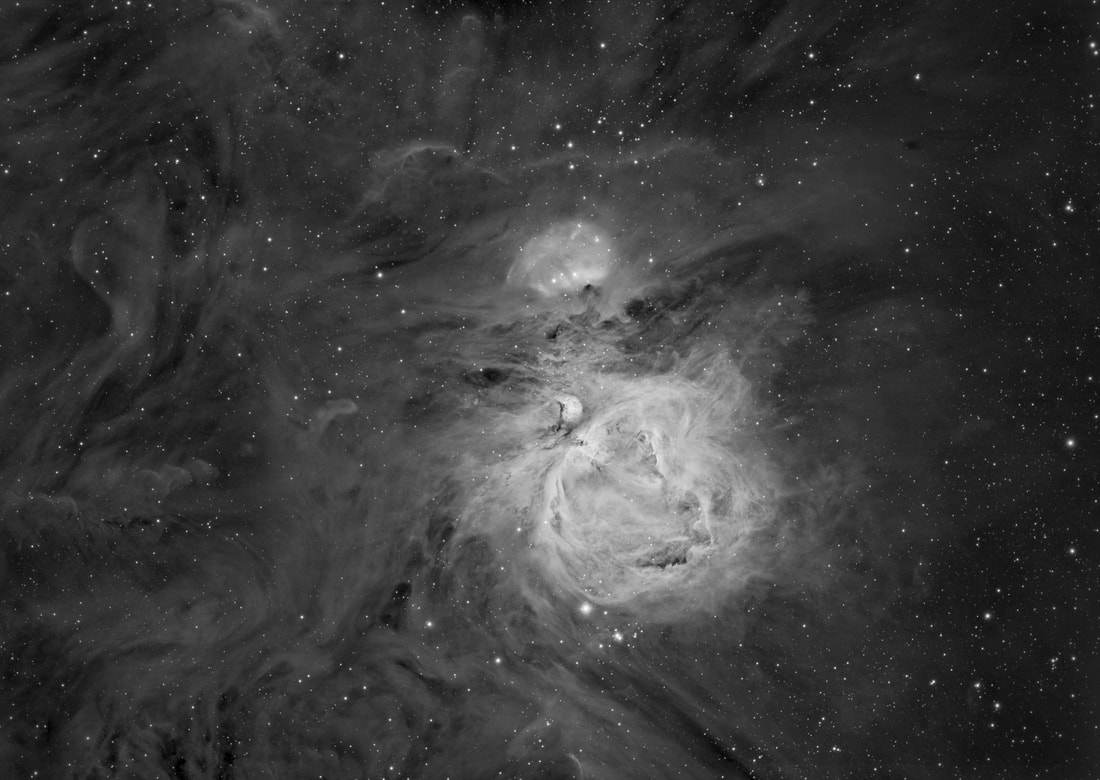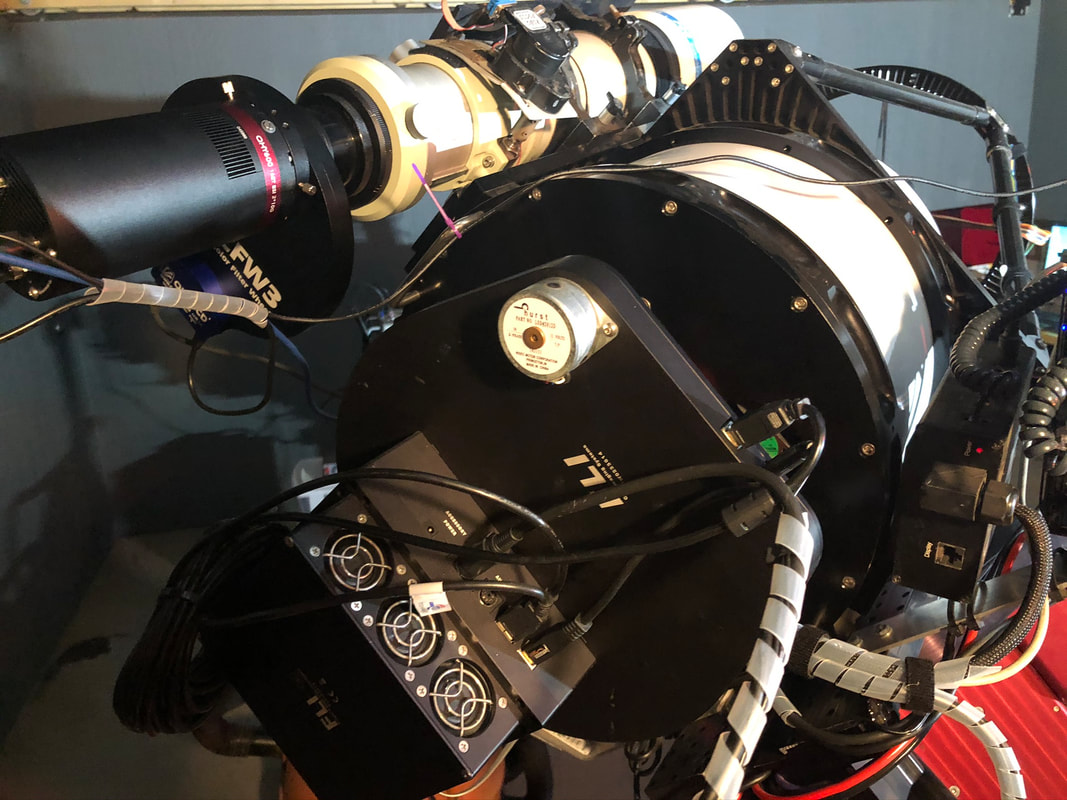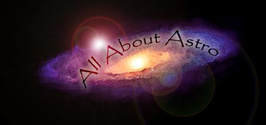
Why? Because it's the first full-frame (35mm film size) grayscale camera available to astronomers. And because it's a 16-bit back-illuminated CMOS sensor with quantum effiiciency of over 90% (sensitivity), with barely any camera read-noise at all when compared with traditional CCDs, it's pretty much the perfect camera. Moreover, because the camera accomplishes this with really small 3.75 micron pixels (60 megapixels in total), it matches very well with smaller, high quality refractors like the FSQ-106.
The filter wheel holds 7 large 50mm unmounted filters, which currently holds Custom Scientific LRGB filters as well as 4.5nm Ha/OIII/SII spectral band filters, also from Custom Scientific.
Here is a "first light" image with the camera, a single frame shot (4 arc degrees wide) of the Orion Nebula region (M42/M43) taken in hydrogen-alpha. Exposure time is 390 minutes in total using 10 minutes subexposures.
Remarkably, only a small amount of the M42 core was blown out in the subexposure (massive full-well depth), so I had to mask only a small amount of the core with extra data...in this case with a stack of 50 exposures of 15 seconds each.
The image is remarkable because it shows the capability of the camera, made more so because much of the data was collected over the past few nights with a bright moon in the sky. Likewise, because I was not able to test the camera when I installed it due to bad weather, the camera currently is tilted about 3%, meaning it's not optimal across the field.
For those evaluating the performance of the camera (my apologies to the lay person who just likes to see pretty pictures), you should know that this image had slight vignetting in the corners given this setup and was taken with ZERO calibration frames...no darks, biases, or flat fields. The subexposures were taken at -12c, dithered. All pre-processing done in PixInsight 1.8.7, drizzle stacked. The slight vignetting was controlled in processing with the excellent ProDigital "AstroFlat" plugin in Photoshop CC.
For all the talk astronomers like to make about specifics of camera performance, quit being so picky! This camera is better than any camera that preceeded it, including that FLI PL.16803 also in that picture. In fact, you can purchase TWO QHY600 cameras for the camera price as that FLI CCD setup.
It's truly a remarkable time to be an astrophotographer.

 RSS Feed
RSS Feed
